Price: £49.99
Developer: Turtle Rock Studio
Publisher: Warner Bros
Platforms: PC, PS5, Xbox Series X/S, PS4, Xbox One
Initially I was aghast at the confusing mess Back4Blood laid in front of me. It’s a game stacked with so many bells and whistles that it wouldn’t look out of place in Rio’s Carnaval. The whole thing felt like a massive overcomplication of Left4Dead’s simple and elegant multiplayer fun, and I was concerned that developer Turtle Rock had completely messed this up.
But the more I played of Back4Blood, the more I warmed to the design decisions Turtle Rock have made. I don’t think it’s a brilliant game, but it is a good enough successor to Left4Dead to keep me engaged, while also being different enough that it doesn’t feel like a simple retread.
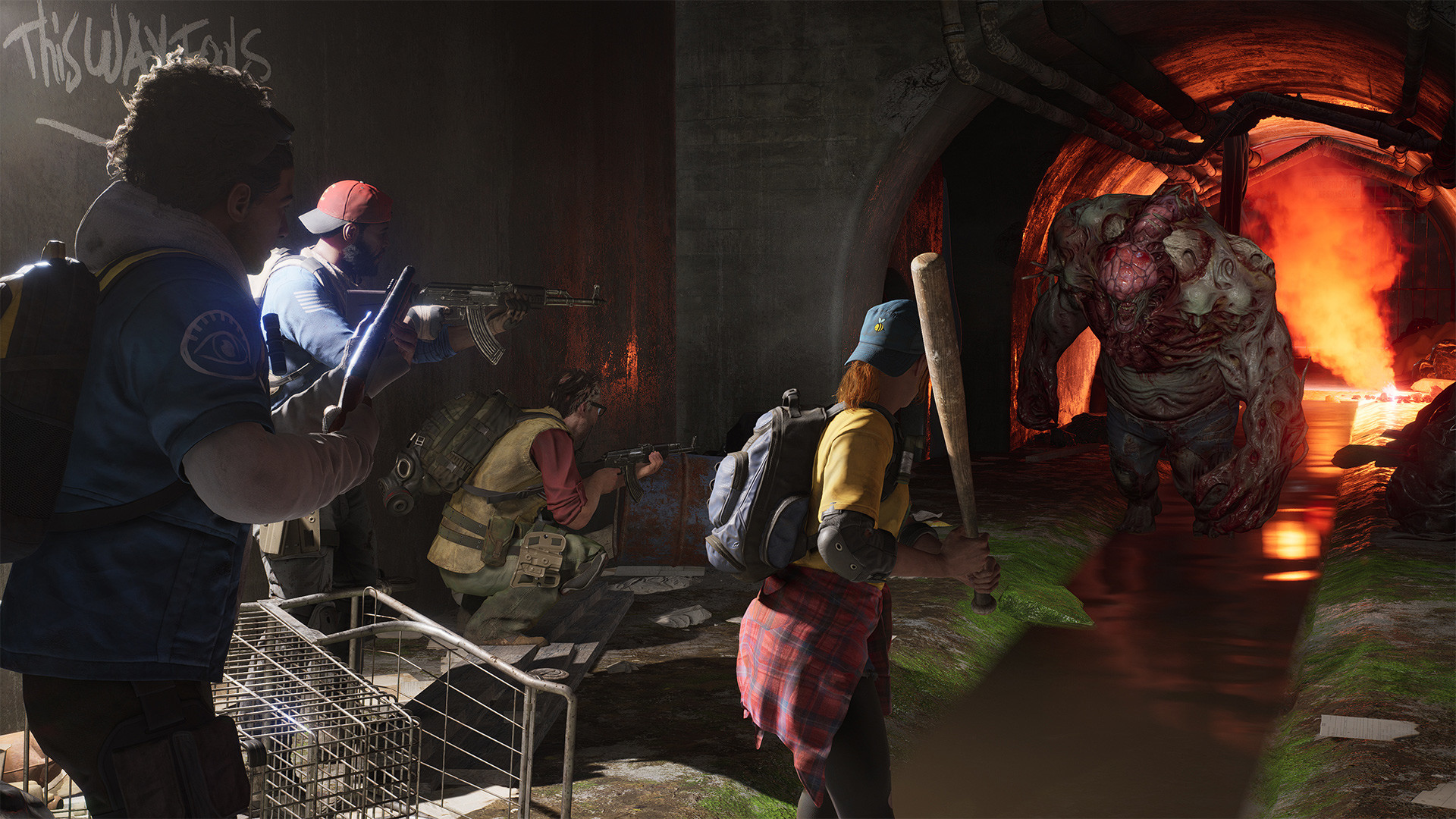
The premise, at least, is essentially the same. Back4Blood sees up to 4 players assume the role of ‘Cleaners’ working together to fight their way through a city overrun with ‘Ridden’ (Turtle Rock might as well have called them ‘I Can’t Believe It’s Not Zombie’). As players battle from one safehouse to the next, the game is overseen by an unseen AI mastermind, that attempts to hinder player progress, spawning not-zombie hordes as well as ‘Special Ridden’ that attack players with various abilities.
But where Left4Dead was the platonic ideal of a cooperative shooter, a fiercely pared-down experience that lets its systems and environment design do the talking, Back4Blood concedes heavily to the realities of modern multiplayer gaming. It has a complicated loot system that combines a dazzling array of guns with all manner of attachments. It has twice the number of characters as Left4Dead, all of whom can be customised with a wide range of skins. Atop all this is an involved deck-building card game that sees both Cleaners and Ridden grow more powerful and specialised as the game progresses.
All of this is introduced to you at the same time, and it’s overwhelming to the point of being off-putting. A new player could grok Left4Dead in about five minutes. You pick a gun, you shoot the Infected, and you work together to avoid being pulled apart by the Special Infected. Yet despite playing Left4Dead and its sequel for hundreds of hours, I spent my first couple of hours with Back4Blood bumbling around like a confused old man. What are corruption cards? What are supply lines? How does this all work?
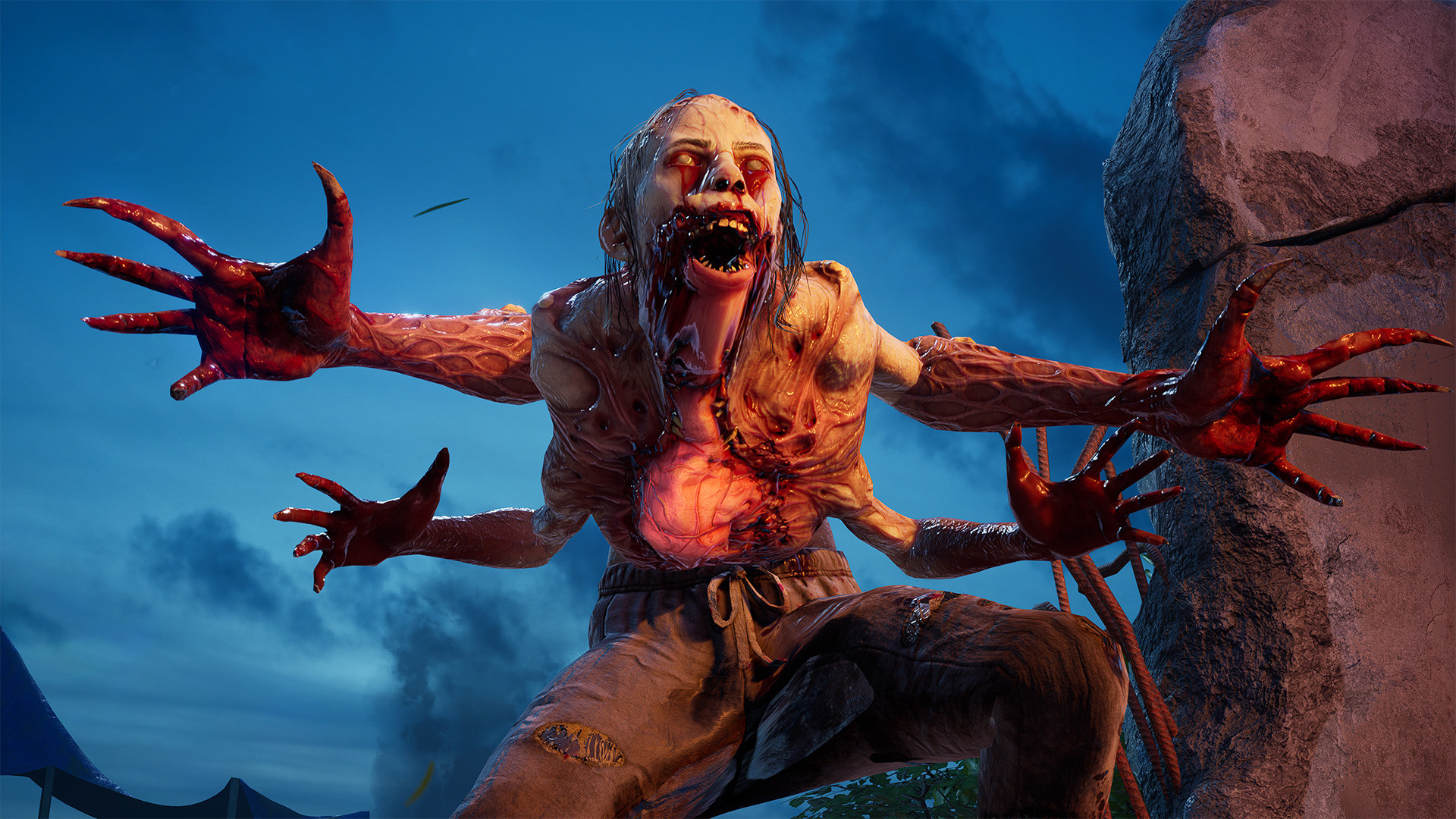
What doesn’t help affairs is that Back4Blood also comes off as a bit bland. Left4Dead was an extremely characterful game. Its film-grain heavy visuals, grindhouse-style movie posters, and highly distinctive soundtrack gave it an instant appeal that Back4Blood lacks. The campaign’s early levels are murky and indistinct. Back4Blood initially feels a lot less interesting. The Cleaners don’t have the same sense of camaraderie as Left4Dead’s survivors, while the Special Ridden are indistinct fleshy blobs.
The first couple of hours aren’t all bad. The weapons all feel excellent. I’m particularly fond of the heavy pistols, the Desert Eagle and the Magnum, both of which have a wild kick and are great for picking off Ridden in quick succession. The semiautomatic rifles are satisfying too, although Back4Blood’s fascination with Call of Duty-style scoped weapons feels a bit odd in a game where most of the combat takes place at close range. I also like that different weapon types have their own ammo pool, and that players can drop ammo they’re not using for other players to pick up. It encourages you to cooperate with your team and think tactically about your weapon choices.
Indeed, this is where Back4Blood becomes interesting, slowly revealing itself to be a more thoughtful game than Left4Dead. Back4Blood’s 4 “Acts” are much longer affairs than Left4Dead’s, growing tougher as you progress further into them. Both the regular and Special Ridden mutate over time, becoming stronger, faster, more aggressive and even developing new abilities. Meanwhile, the levels themselves can be affected by random events, such as thick fog that obscures your sightlines, or flocks of bird that can trigger hordes if startled.
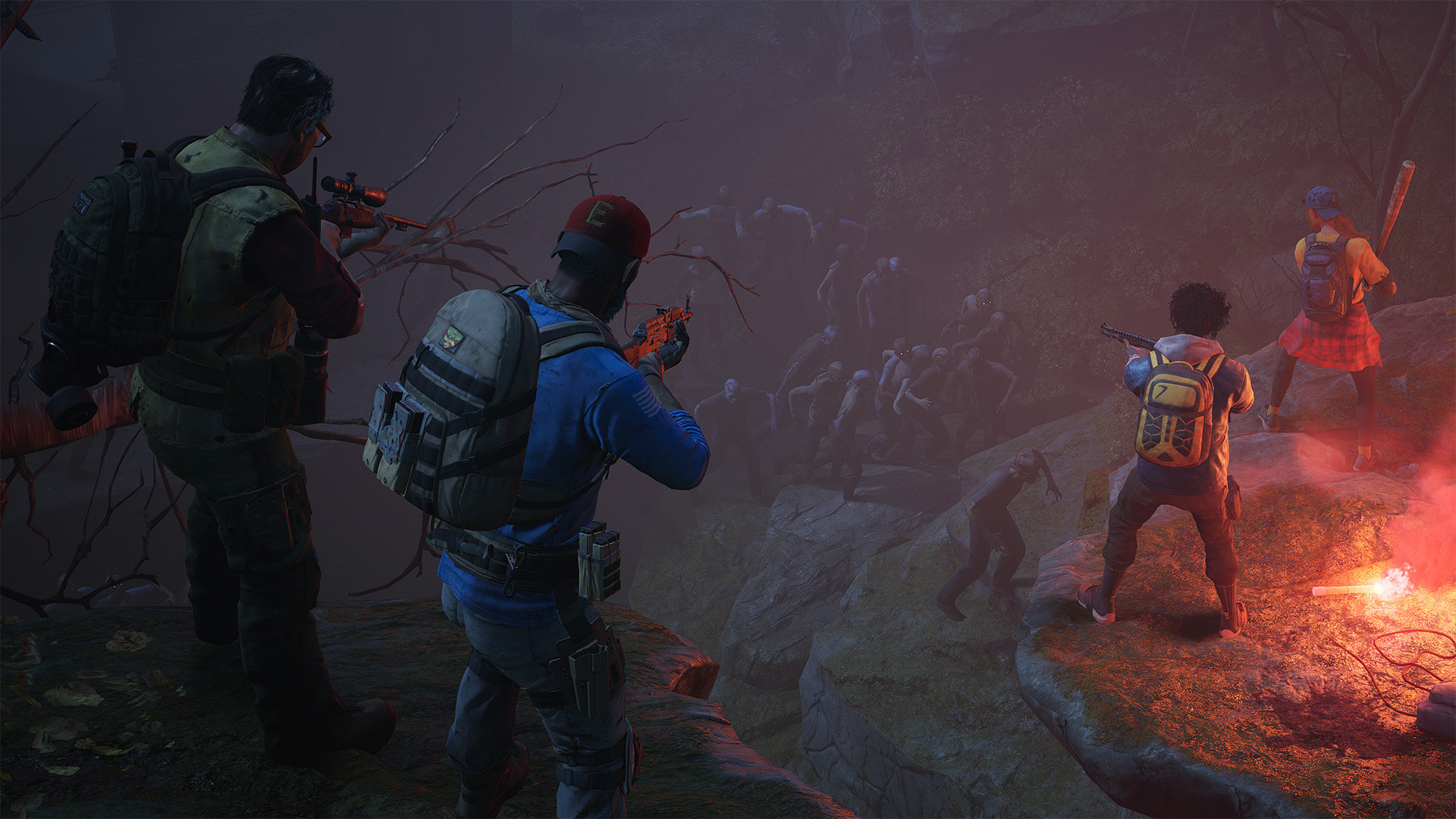
To combat Back4Blood’s growing challenge, you need to grow your own card deck, either buying them with resource points from the “Supply Lines” menu, or making opportunistic purchases during the campaign itself. There are a wide variety of cards, which can be combined to create specific builds. For example, you could combine cards that give you a bonus heavy melee attack with a card that heals you when you kill an enemy with a melee weapon, essentially turning your character into your party’s tank. Or you could focus on protecting your party with cards that give players a health bonus when a party member is knocked down. You also draw cards in the order you build your deck, which means you need to think about when you want a certain ability to be available.
It takes a while to get going, but the deck-building system does work. And it’s not the only way Back4Blood reveals itself to be more interesting than it initially seems. While the first few missions are somewhat uninspired, later chapters become increasingly varied, both visually and in terms of objective. Each act is split into multiple chapters, each of which has its own unique finale. One particularly memorable chapter involves dashing across a bridge that’s been hit by a ferry, which has become ensnared in the shattered concrete. After crossing to the other side, you need to then return to the ferry to blow it up, thereby preventing the Ridden from crossing the river. Another, more grisly highlight involves searching the area surrounding a police station for the body parts of one of its senior officers, so you can use the handprint scanner to unlock the saferoom.
Back4Blood undoubtedly improves as it progresses, its undeniably convoluted design gradually falling into place. There are some issues that don’t resolve themselves, however. While the game is designed for 4 players, I found that it plays best with 2. With 4 players the experience is very confused and intense, with the game throwing silly numbers of Special Ridden at you. Played solo, by comparison, the game is far too easy. Back4Blood’s bots are considerably more capable than Left4Deads AI idiots, casually wiping the floor with the Ridden.
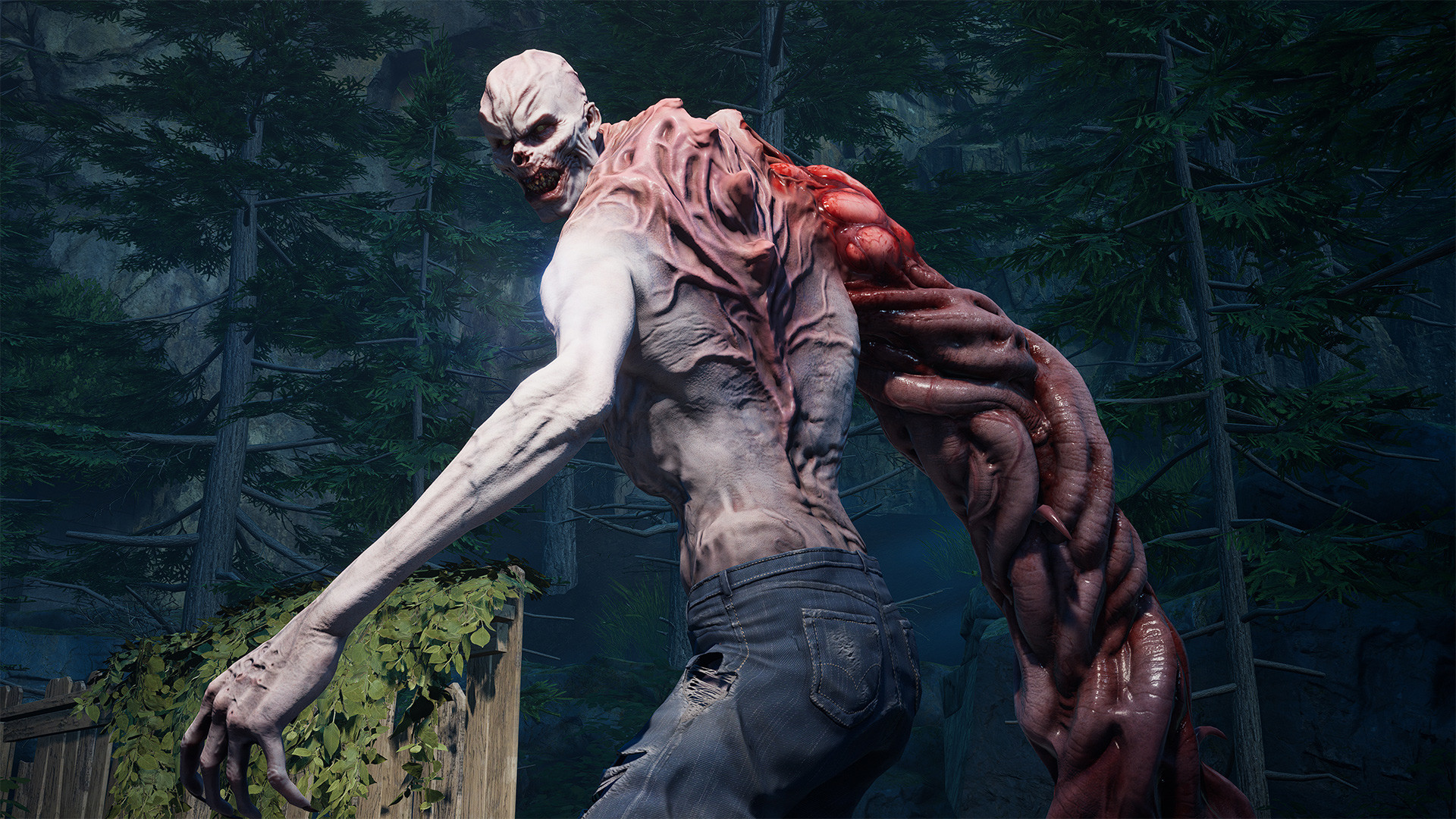
My other issue is that the Acts are too long. This isn’t to say the game is too long, more that the pacing would benefit from having a larger number of shorter acts. As it stands, each act takes a good 5-6 hours to complete, which is too long for an evening’s play. I understand why Turtle Rock has approached the design in this way, as it gives the card system a better chance to alter the experience over time. But it also makes each act feel like a bit of a slog.
Still, Back4Blood is far from the disaster I feared it might be. The core combat is satisfying and fun, and the way the experience evolves as you play it is genuinely impressive. I even like the card system, and found myself quite keen to experiment with new deck builds and see how they affected the game. Back4Blood may not surpass Left4Dead, but it is a worthy successor nonetheless.






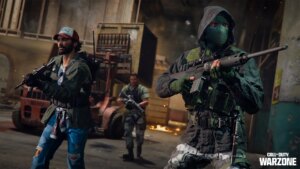











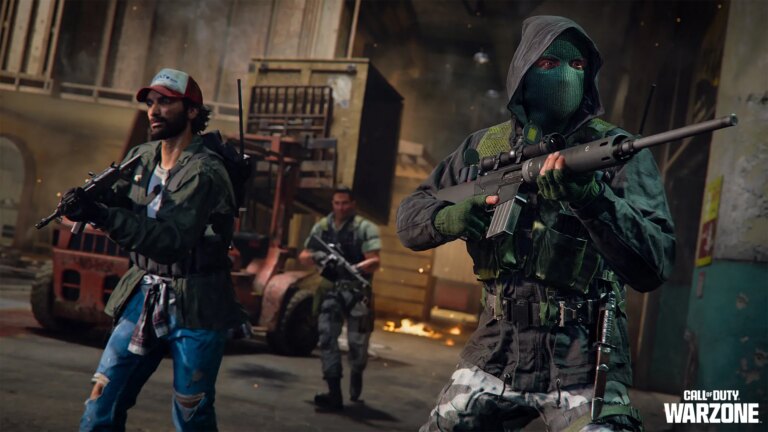

+ There are no comments
Add yours